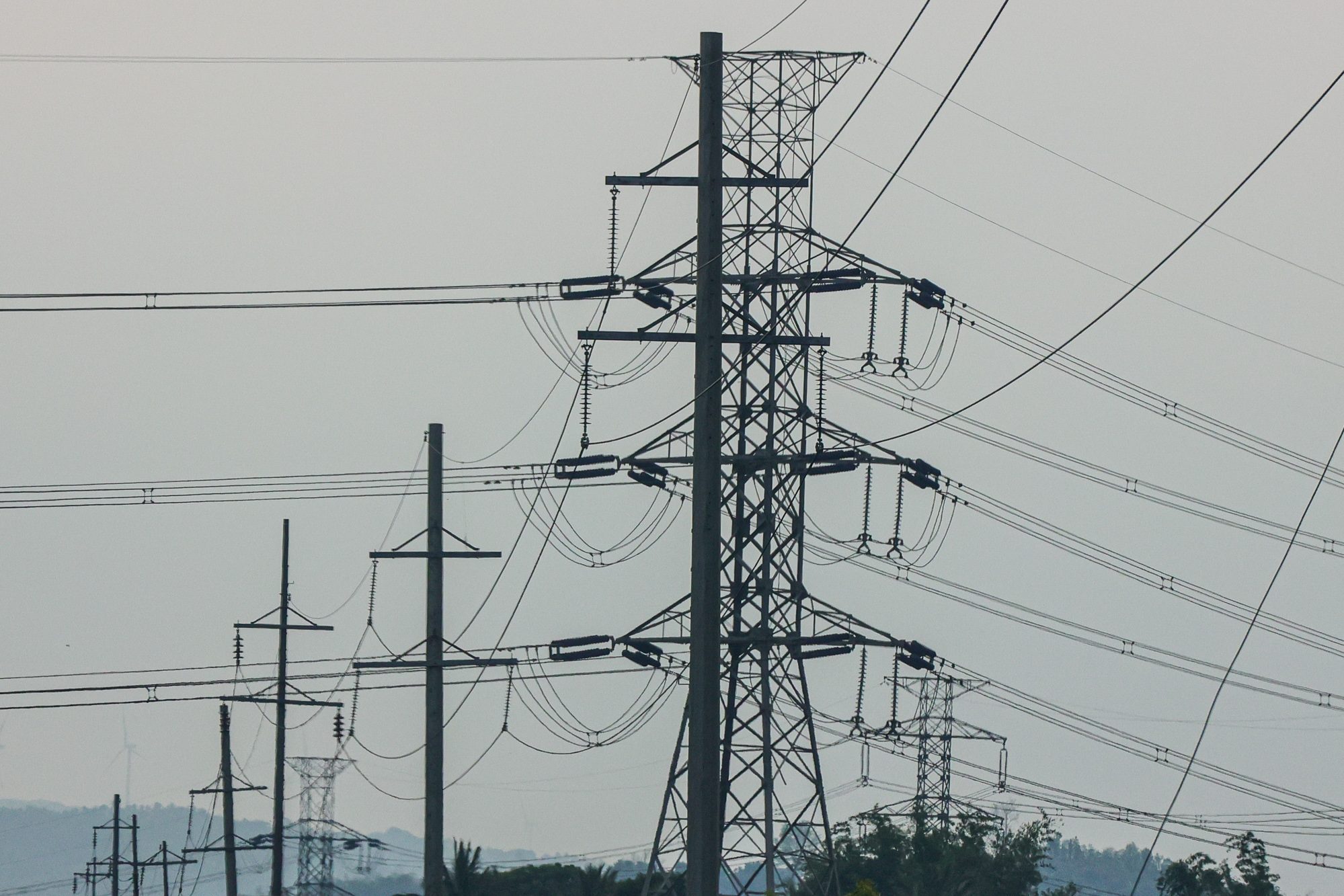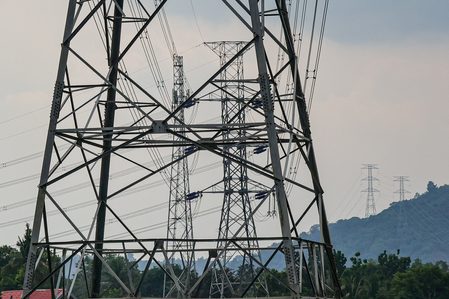SUMMARY
This is AI generated summarization, which may have errors. For context, always refer to the full article.

MANILA, Philippines – Lawmakers have sounded the alarm over various issues hounding the National Grid Corporation of the Philippines (NGCP), which include alleged security and spying risks, as well as exorbitant dividends amid power outages in many areas in the country.
NGCP operates, maintains, and develops the country’s transmission network. Some politicians want to kick China out from the consortium that established NGCP by scrutinizing its franchise.
“I met with the President and I told him the possible security risk. Sinabi ko sa kanya mga recommendation ko, pumayag naman siya kung para sa ikakabuti ng bayan, so be it. In fact, I told him about sa pagkansela ng franchise ng NGCP if makitaan ng violations,” said Senate committee on energy chairman Raffy Tulfo.
(I told him my recommendations, and he agreed with them, if it would be for the good of the country. In fact, I told him about the cancellation of NGCP’s franchise if violations are found.)
History
Here’s a summary of how private entities and China got control of the Philippines’ transmission lines:
Pre-privatization era: Prior to the establishment of NGCP, the transmission system in the Philippines was operated and maintained by the National Transmission Corporation (TransCo), a government-owned and controlled corporation. TransCo was responsible for the transmission of electricity from power plants to distribution utilities nationwide.
Power Sector Reform Act: In 2001, the Philippine government enacted the Electric Power Industry Reform Act (EPIRA) or Republic Act No. 9136. EPIRA aimed to restructure the country’s power sector and promote competition, efficiency, and private sector participation. One of the significant provisions of EPIRA was the privatization of the transmission sector.
Privatization and creation of NGCP: In 2008, or during the term of former president Gloria Macapagal-Arroyo, the Philippine government initiated the privatization process for the transmission sector.
TransCo issued a concession for the operation, maintenance, and expansion of the country’s power grid through a public bidding process. The Philippine Constitution limits foreign ownership to at most 40%.
The consortium composed of the State Grid Corporation of China (SGCC), Monte Oro Grid Resources Corporation, and Calaca High Power Corporation emerged as the winning bidder.
Monte Oro, which has a 30% stake, was a company formerly owned by Enrique Razon. It was eventually acquired by OneTaipan Holdings of Henry Sy Jr. Calaca High Power is a company owned by Robert Coyiuto Jr.
Their winning offer narrowly beat the sole rival bid from a consortium led by San Miguel Energy.
In January 2009, NGCP was officially established as a result of the bid by the consortium. SGCC holds a 40% stake in NGCP, while the remaining 60% is owned by the two Filipino companies.
The concession deal was worth $3.95 billion, with a franchise good for 50 years. It was considered one of the biggest privatization efforts in the country.
SGCC’s overseas investments
Prior to NGCP, China’s SGCC had invested in other countries.
SGCC has interests in the generation, distribution, and transmission of power in Brazil. It is also involved in the transmission, distribution, and sale of power in Portugal, Greece, and Australia.
SGCC likewise has investments in Greece, Italy, Oman, Chile, and Hong Kong.
Financials
NGCP had to pay $3.95 billion for the concession rights, with 25% or an equivalent of P46 billion, to be paid immediately, with the remaining 75% payable in 40 semi-annual installments.
The balance, around P127 billion, was pegged at the exchange rate of P43.75. Since then, the peso has depreciated, translating to millions worth of savings for NGCP and its shareholders.
According to its financial statements, shareholders were able to recoup the initial investment in just four years of operations. By 2015, shareholders were already able to get double their initial investments.
In a Senate hearing, the grid operator said that the bulk – or 75% to 99% of its net income made in 2014, 2015, 2017, and 2019 – were paid out as dividends to shareholders.
In 2014, NGCP’s dividends exceeded net income with P24 billion handed to shareholders even though it only earned P22 billion.
Since 2009, NGCP has earned P286 billion. Of this amount, P208 billion had been distributed as dividends to shareholders.
Senator Sherwin Gatchalian questioned NGCP’s payouts, as there have been projects that had already been charged to consumers even if these have yet to be completed.
“This is really a super profitable business. We’re being cooked in our own lard,” Gatchalian said.
NGCP spokesperson Cynthia Alabanza said that dividends of a particular year are not taken from the earnings of the same or previous year.
“Our profits or dividends were taken from retained earnings which have accumulated over the years. So it’s not a one is to one…the numbers may or may not match,” Alabanza told the Senate panel.
NGCP’s defense
Senators have questioned NGCP’s dividend policy amid the company’s struggle to complete some transmission projects.
NGCP explained that it had spent P300 billion for capital expenditures since 2009. It added that when government was in charge from 2003 to 2008, capex for transmission lines amounted to just P33 billion.
“Nakapagtayo na kami ng 3,729 circuit kilometers of lines, at nadoble na namin ang transmission capacity sa buong Pilipinas,” she said.
(We were able to put up 3,729 circuit kilometers of [transmission] lines and we were able to double the transmission capacity in the entire Philippines.)
NGCP also blamed the COVID-19 pandemic and right-of-way issues for the project delays.
Security concerns
Before lawmakers questioned NGCP’s dividend payouts, experts had warned about China’s ability to control the Philippines’ power system through NGCP.
In 2019, Retired Supreme Court justice Antonio Carpio said that NGCP’s ownership structure is a “cause for concern” as it threatens national security.
“I think it should be a cause for concern especially if the technicians who are manning or maintaining the grid, the power lines, are Chinese. Because if the Chinese are the ones maintaining our national grid then it’s easy for them to shut it down. They can always inject malware in the software,” Carpio said.
An internal report for Philippine lawmakers obtained by CNN claimed that Chinese engineers had access to “key elements of the system, and that power could in theory be deactivated remotely on Beijing’s orders.” On NGCP’s website, SGCC is listed as NGCP’s “technical partner.”
“Our national security is completely compromised due to the control and proprietary access given by the local consortium partner to the Chinese government,” the report prepared by an unnamed government agency warned.
The report also said that NGCP technology has “increasingly” been switched to products of Huawei, which had been flagged by the Department of Foreign Affairs and banned by Japan, Taiwan, Australia, and the United States from building their fifth-generation or 5G networks.
The report claimed the Huawei products were “completely proprietary” and can only be operated by Chinese engineers.
In a statement sent to CNN, the Chinese foreign ministry gave assurances that Chinese companies conducting business in the Philippines were doing so “in accordance with laws and regulations to expand mutual benefits and win-win cooperation.”
“We hope certain individuals in the Philippines view such bilateral cooperation with an open mind as well as an objective and fair attitude. They shouldn’t over-worry or even fabricate things out of thin air,” they said.
Under the Aquino administration, former interior secretary Rafael Alunan said it was a “big problem” that China had a “pretty good hold of our vital infrastructure.” The presence of the Chinese in NGCP also alarmed former national security adviser Cesar Garcia.
In 2015, the Philippine government likewise did not renew the work visas of 18 Chinese experts employed by NGCP, owing to security concerns.
“This (NGCP) is run by Filipinos, for Filipinos,” NGCP said.
Arroyo-China ties
The involvement of China in the privatization of the Philippines’ transmission network occurred at a time when Beijing and its elites had a strong relationship with Arroyo.
China getting a slice of NGCP happened after the controversial NBN-ZTE deal. In 2007, the Philippines’ national broadband network was supposed to get a $329.5-million upgrade through Chinese telecommunications company ZTE. The deal was eventually scrapped following irregularities like overpricing and rent-seeking.
It was also during Arroyo’s term when she pushed for the North Luzon Railway system funded by China. The $500-million loan from the Export-Import Bank of China for the project was eventually abandoned due to various pressures and controversies. – Rappler.com
Add a comment
How does this make you feel?










There are no comments yet. Add your comment to start the conversation.